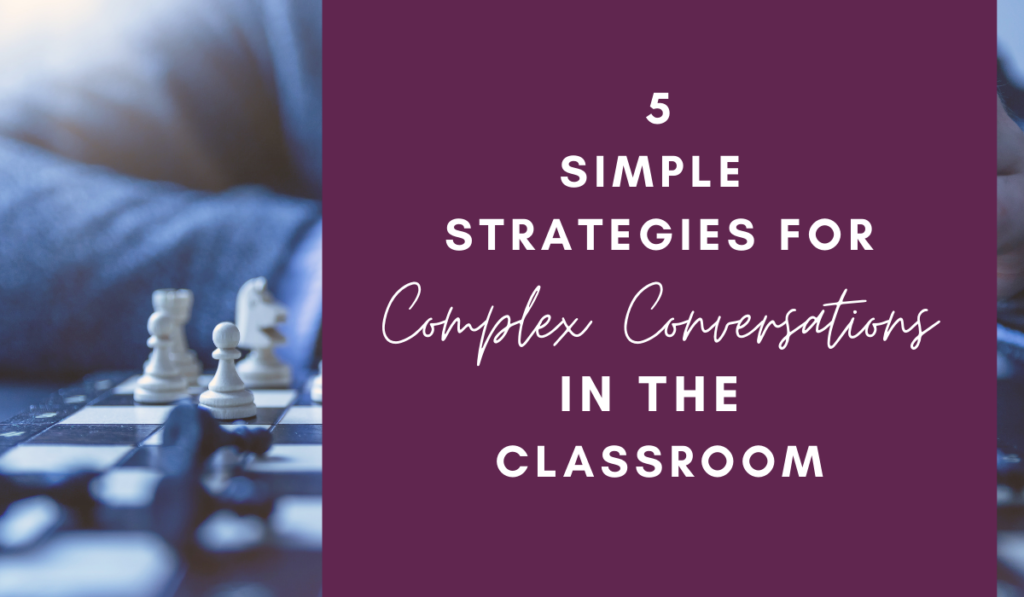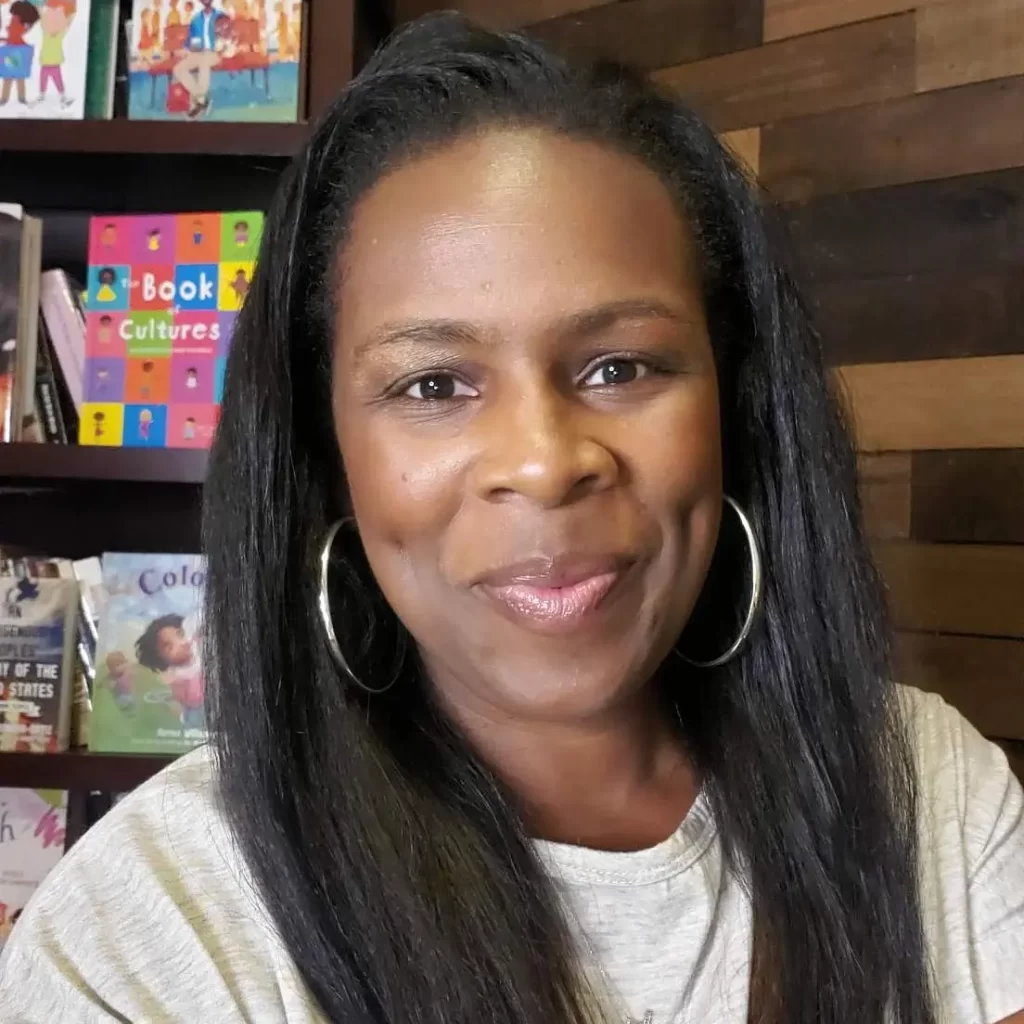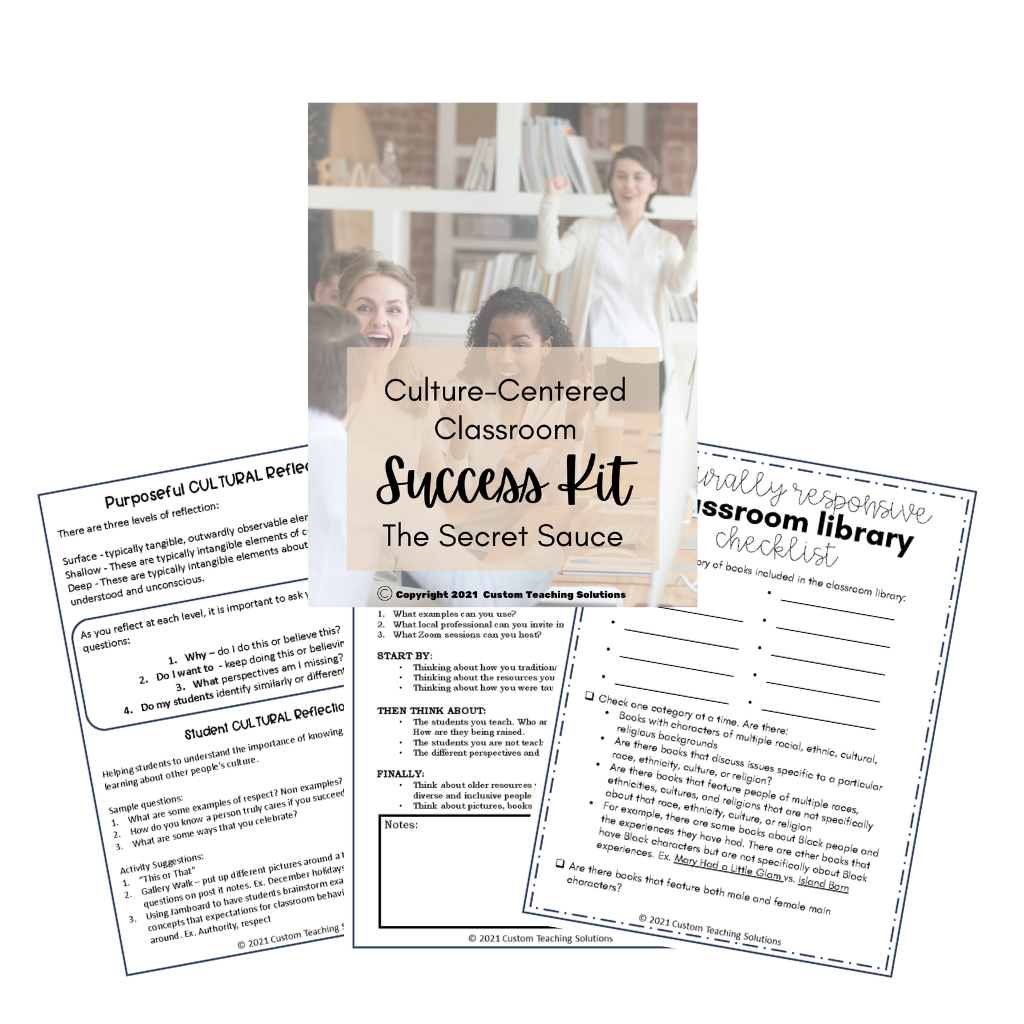Having complex conversations in the classroom can seem challenging and overwhelming, but I have 5 simple strategies to help you confidently guide student discussion. Before we dive in, I want to be honest with you. These strategies are effective and classroom tested, but they are not a magic spell. Long before you engage in complex conversations with your students, it is important to develop authentic relationships through culturally responsive teaching practices. Students that are affirmed, welcomed, and celebrated in the classroom are ready for the rigor of dynamic discussions around topics we consider complex.
Before you begin, take a deep breath, acknowledge any feelings you have surrounding the event or topic, establish why it is important to discuss this with your students, and remember that you CAN do this!

Two Types of Complex Conversations
When considering complex conversations, there are two categories. The first are curriculum based conversations. These traditionally happen in social studies or English classes because the students are learning about historical and current events that shape our world. Teachers know these topics will be covered and have time to prepare for the emotional triggers and varying perspectives that will be shared during discussion. The second are trauma based conversations. These happen when something major and unexpected happens in the world. Whether it is something that happens in the local community or on the world stage, it rocks the status quo. Depending on when the event happens teachers have little to no time to prepare for the discussion that will happen. These conversations can happen in any class. Often students bring up these topics in classes where they feel most connected to the teacher.

5 Simple Strategies for Facilitating Student Discussion
These 5 strategies are effective with both categories.
- Create common definitions
- Gather information
- Present the facts
- Have Discussion
- Allow for free expression
Creating common definitions helps to ensure everyone is on the same page. Depending on the topic you may want to put a word on the board and allow students to share what they believe a word or phrase means. Then, decide on a common definition as a class. With more sensitive or complex topics it is important to provide definitions for the students. Explaining words, phrases, and systems can help build a foundational knowledge so your students can create questions and more effectively engage in discussion.
Gather information from the students. Determine what they know about the event and what details are missing.If the majority of students are unaware of the event, you may want to begin by showing the students pictures of or related to the event. Then, the students can list words, draw an image, or connect a song with the picture.
Once you understand what the students know, it is time to present the facts from reputable sources. Either you can give the facts or have students gather the facts. Ensure students understand what a reputable source is first. Depending on the grade level and the topic, you may want to compile a list of sources to get the students started. Once students gather all the information, a full and accurate sense of the events can be ascertained.
After facts are gathered, discussion guidelines such as norms and expectations can be established. Allow students to participate in the establishment of the guidelines. Then, students can have a robust discussion.
Some students may not want to participate in discussion, or may not be ready to discuss. Allowing for free expression will allow for students to communicate their feelings in a way that feels most comfortable to them. Writing a poem or journal response, singing a song or rap, choreographing a dance, or drawing.

Recommendations for Success with Complex Conversations
I recommend practicing and preparing before the trauma. Think about a historically traumatic situation like September 11, 2001, the shooting at Sandy Hook Elementary School, or the murder of Tamir Rice. Walk through the strategies as if you were preparing to talk to your students about one of these events.
I also recommend building relationships with your students through the implementation of culturally responsive teaching practices. These practices help students understand the impact of their cultural traditions, beliefs, and norms on their world view. These practices encourage students to learn about, and engage with differing cultural perspectives and discover the beauty in diversity. Affirming, welcoming, and celebrating students through instruction develops trust and confidence as they navigate new ideas. From here, you can engage your students with rigorous lessons that “develop a critical consciousness through which they challenge the status quo of the current social order” (Ladson-Billings, 1995). Regular practice develops the students’ ability to have emotional charged/trauma based complex conversations more easily.
Here is a FREE downloadable guide that I created about having complex conversations: 
Cheers!






